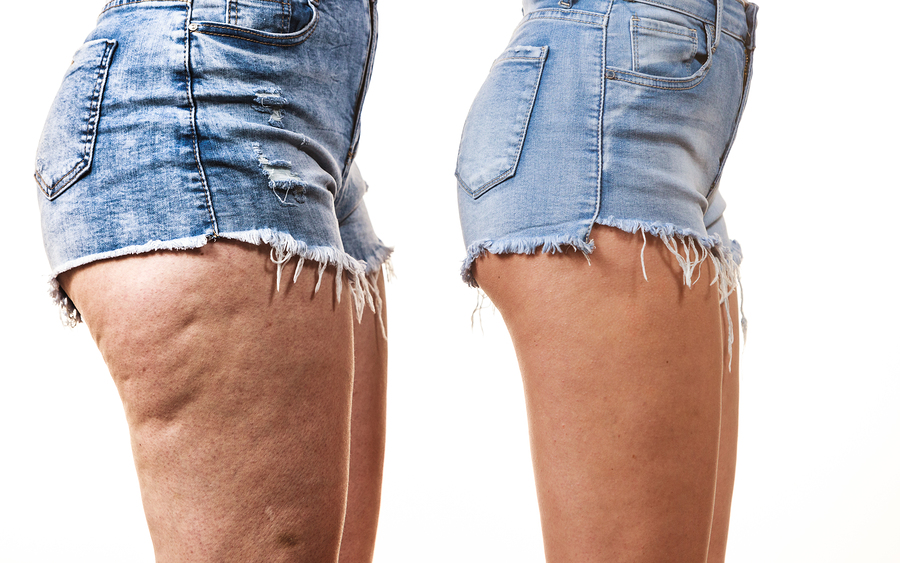WHY DO WOMEN GET CELLULITE?

Between 80 – 90 percent of women will probably experience cellulite at some point in their lives.
The effect is mostly temporary.
A diet low in fat, smoking cessation, and an active lifestyle may help reduce the incidence of cellulite.
Cellulite can affect both men and women, but it is more common in females, due to the different distributions of fat, muscle and connective tissue.
Grades of Cellulite
Grade 1 or Mild: There is an orange-peel appearance, with between one to four superficial depressions and a slightly draped or sagging appearance to the skin.
Grade 2 or Moderate: There are between five and nine medium-depth depressions, a “cottage cheese” appearance, and the skin appears moderately draped.
Grade 3 or Severe: There is a “Mattress” appearance, with 10 or more deep depressions, and the skin is severely draped.
Causes
The exact cause of cellulite is unknown, but it appears to result from an interaction between the connective tissue in the dermatological layer that lies below the surface of the skin, and the layer of fat that is just below it.
In women, the fat cells and connective tissue in this layer are arranged vertically. If the fat cells protrude into the layer of skin, this gives the appearance of cellulite.
In men, the tissue has a criss-cross structure, which may explain why they are less likely to have cellulite than women.
Hormonal Factors and Age
Hormones, likely play an important role in cellulite development, estrogen, insulin, noradrenaline, thyroid hormones, and prolactin are part of the cellulite production process.
One theory is that as estrogen in women decreases in the approach to menopause, blood flow to the connective tissue under the skin also decreases.
Lower circulation means less oxygen in the area, resulting in lower collagen production. Fat cells also enlarge as estrogen levels fall.
These factors combine which makes the fat deposits more visible.
Age also causes the skin to become less elastic, thinner and more likely to sag. This increases the chance of cellulite developing.
Genetic Factors
Genetic factors can be linked to a person’s speed of metabolism, distribution of fat under the skin, ethnicity, and circulatory levels. These can affect the chance of cellulite developing.
Cellulite is more likely to happen after the age of 25 years, but it can affect younger people as well, including teenagers.
Treatment
At our facility we offer Micro-Current body treatments for cellulite. This treatment uses a set of electrodes to send customized electrical pulses that feels like a slight tingling sensation, through the nervous system which imitates the body’s natural abilities to remove fat. That means you lose fat without going to the gym and also reduce the appearance of cellulite in the bargain! You will see visible results after one treatment, usually four to six micro-current treatments are recommended. More treatments may be needed if the cellulite is grade 2 or grade 3 stage.
Contact us and smooth your way to cellulite free skin!
